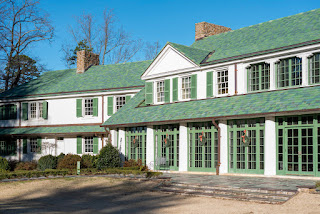Preserving American History Through Art: The Reynolda Museum of Art
Residents of Winston-Salem, North Carolina, will surely recognize the name Reynolda. After all, you can see it adorning numerous places around the city from buildings at Wake Forest University to the name of a beautiful public garden. Another place you will find it is at the Reynolda House Museum of American Art, which has deep roots in the Winston-Salem community.
To understand the history of the Reynolda Museum of Art, we need to first explore that of its founders, RJ and Katharine Smith Reynolds. R.J. Reynolds was born in 1850 in Virginia. The son of a tobacco farmer, he immersed himself in the family business before ultimately deciding to strike out on his own. Seeing the need for a railroad hub that wasn’t present in his family’s county, he moved to Winston-Salem to create his own tobacco company, which would grow into the nation’s second largest.
Katharine Smith Reynolds worked as a secretary for the R.J. Reynolds tobacco company after graduating from Sullins College. She and R.J. married in 1905. She engaged in extensive philanthropy including pushing for progressive reforms, including those within their tobacco factory such as hot lunches and a nursery for employees. She was also extensively involved in the design and construction of Reynolda House.
Katharine’s vision for the farm estate led her to hire a number of people to design and carry out the plans. Chief among these was Charles Barton Keen, who designed the central house. Keen was a prolific architect who was well-known for his estate designs in Philadelphia. Late in his career, he became a favored architect of North Carolina tobacco farmers largely due to his work on Reynolda. He often worked in association with Thomas Sears, who served as the landscape architect for Reynolda House.
Construction on this estate began in 1912 with R.J., Katharine, and their children moving into the home by Christmas of 1917. Several years after R.J.’s death in 1918, Katharine would marry J. Edward Johnston, the principal of Reynolda School. She too would pass away three years afterwards, shortly after giving birth to her sixth child.
The estate became home to a second generation of Reynolds in 1935 when Mary Reynolds purchased it from her siblings. She and her husband, Charles Babcock, made some renovations to the property including the addition of a new front entrance. They used the property initially as a vacation home but later became permanent residents in 1948.
Over time, a large portion of the Reynolda estate was donated to various charitable causes. This began in 1946 when 300 acres was given for the relocation of Wake Forest College. President Harry S. Truman was a guest at Reynolda for the groundbreaking ceremony in 1951. Following the death of Mary Reynolds Babcock in 1953, her foundation granted money and land to Wake Forest and many other organizations. Among these, Reynolda Gardens was donated to the university.
Charles Babcock continued this charitable path, dedicating the Reynolda House along with 19 acres as a nonprofit institution focused on the arts, with his daughter Barbara Millhouse becoming the initial president of the institution. This served as the transition of the home from a residence to a museum. In 1967, the Museum of American Art would open its doors in Reynolda House, initially featuring a collection of 12 paintings from U.S. artists.
The 1970s saw a number of changes to the area formerly known as the Reynolda Estate. Perhaps most notable was the renovation and restoration of many of the old buildings in what would become Reynolda Village. This was spearheaded by architect Edwin Boudin whose efforts led to the creation of an award-winning commercial complex. For Reynolda House, this decade saw it receive accreditation from the American Association of Museums.
In 1980, an area of nearly 180 acres featuring the Reynolda House Museum of American Art, Reynolda Gardens, Reynolda Village, and other properties was added to the National Register of Historic Places. The following two decades would see extensive growth for the museum in terms of its collection and its endowment.
In 2022, the Reynolda House officially became affiliated with Wake Forest University, providing synergy around both institutions’ efforts to promote arts education and outreach. This led to the creation of the Mary & Charlie Babcock Wing, combining galleries with education studies and other spaces for visitors to engage in the arts.
Today, the Reynolda Museum of American Art continues its initial purpose of promoting the American story through art and education. The museum currently maintains a collection of over 6,000 paintings and historical artifacts with many rotating through its exhibitions. These include works by seminal American artists such as Georgia O’Keefe, Andy Warhol, and Alexander Calder.
From the estate of philanthropic tobacco farmers to one of the state’s leading centers for educating and preserving the arts, Reynolda House has been a staple of Winston-Salem’s history. If you are ever nearby, the Reynolda House Museum of American Art is certainly worth a visit.
Learn more here:





.JPG)

Comments
Post a Comment
Thanks for the comments!